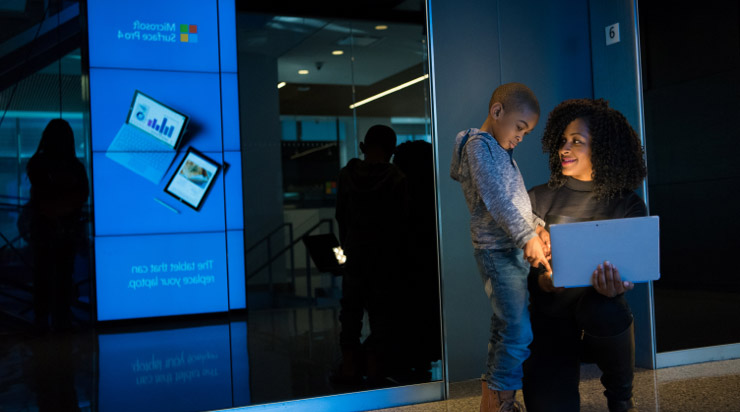The Role of ERP Systems in Streamlining Restaurant Operations
Restaurants are complex operations with countless moving parts to manage—from inventory and finances to employee schedules. For many operators, juggling these elements can be overwhelming, especially without the right tools in place. Enter ERP systems (Enterprise Resource Planning). These all-in-one solutions are revolutionizing the way restaurants manage their operations, improving efficiency, profitability, and overall performance. Here’s how ERP systems can transform your restaurant.
What Are ERP Systems, and Why Are They Important?
ERP systems are comprehensive software platforms designed to integrate and manage core business processes within a single system. For restaurants, this means combining critical functions like inventory management, financial tracking, payroll, and employee scheduling into one seamless platform.
By centralizing operations, ERP systems reduce manual work, prevent data silos, and give restaurant operators clear visibility into every aspect of their business.
Why it matters:
- Restaurants using ERP platforms see a 20–25% increase in operational efficiency, according to Restaurant Technology Insights.
- Streamlining processes reduces errors and saves time, enabling restaurant staff to focus on the guest experience.
Key Features of Restaurant ERP Systems
1. Inventory Management
Managing stock effectively is one of the biggest challenges for restaurants. ERP systems give real-time insights into inventory levels, expiration dates, and usage trends.
Benefits:
- Automatically track stock levels and trigger reorder alerts when supplies run low.
- Reduce food waste with expiration tracking and usage forecasting.
Case Study:
A multi-location restaurant chain implemented ERP-driven inventory tracking and reduced monthly stock losses by 15%, resulting in an annual savings of over $50,000.
2. Financial Tracking and Reporting
Managing your restaurant’s finances becomes simpler with an ERP system’s robust financial tools. These features provide real-time tracking for revenue, expenses, and cash flow.
Advantages:
- Automates accounts receivable and payable.
- Generates detailed financial reports, enabling better forecasting and budgeting.
Real-World Example:
Using ERP’s integrated financial tracking, one restaurant group eliminated monthly spreadsheet reconciliation errors and saved 10 hours of manual accounting work per week.
3. Employee Scheduling and Payroll
Labor is one of the largest expenses in the restaurant industry. ERP systems optimize staffing levels by integrating scheduling with sales forecasts.
Key Features:
- Create data-driven schedules based on expected shifts in customer demand.
- Sync payroll systems with worked hours, eliminating the risk of errors in employee payments.
Efficiency Insight:
Restaurants that use ERP for scheduling see a 20% reduction in overtime hours, according to data from Black Box Workforce Solutions.
4. Sales Integration and POS Synchronization
Connecting your POS system to your ERP ensures accurate sales tracking across all channels, from in-house dining to delivery platforms.
Benefits:
- Avoid discrepancies between sales and inventory levels.
- Analyze top-selling items to refine your menu offerings.
Success Story:
A fine-dining restaurant analyzed POS data integrated with their ERP to identify underperforming dishes. After redesigning their menu, they boosted average order revenue by 12% over 6 months.
5. Compliance and Reporting
From sales tax filings to health compliance records, ERP systems make it easier for restaurants to stay compliant with local regulations. The automated reporting tools save both time and headaches when filing taxes or auditing operations.
Why Restaurants Should Invest in ERP Technology
By consolidating multiple systems into a single platform, ERP systems solve several pain points common in the restaurant industry. Here are three reasons your restaurant should consider investing in ERP technology:
- Save Time and Simplify Workflows
Manual processes like inventory spreadsheets and payroll entries are prone to errors and inefficiencies. With ERP, these processes are automated, freeing up valuable time for your team to focus on delivering a better guest experience. - Increase Profit Margins
ERP systems provide advanced analytics, enabling you to pinpoint inefficiencies and make cost-effective decisions. For example, tracking ingredient trends can help refine ordering habits to save money. - Adapt to Future Growth
Planning to expand or add more locations? ERP systems are highly scalable, meaning you can easily manage your operations as your business grows. They enable multi-site tracking, ensuring consistency at every level.
Choose the Right ERP Tool for Your Restaurant
ERP adoption starts with selecting the right provider and features for your restaurant’s unique needs. Solutions like Restaurant365 are specifically designed for foodservice operations and come with valuable integrations such as POS connectivity, detailed analytics dashboards, and compliance tools.
Before implementing an ERP, conduct a thorough assessment of your current processes to identify areas of improvement. This ensures the system aligns with your operational goals and provides the most value.
Final Thoughts
ERP systems are no longer just for large-scale corporations; they’re an essential tool for streamlining restaurant operations of all sizes. By automating tasks, enhancing visibility into key metrics, and enabling better decision-making, ERP technology sets restaurants on a path to growth and profitability.
At TRIS, we specialize in ERP implementations tailored to the restaurant industry. Whether you’re managing a single location or a multi-unit operation, we’ll help you integrate the right tools to create efficiency and drive success.





Companies often neglect to have written standards and policies around their cybersecurity. Why? Because dozens of them are usually needed, covering everything from equipment management to backup procedures, admin credentialing, remote work policies, and so much more. But it’s well worth the effort.